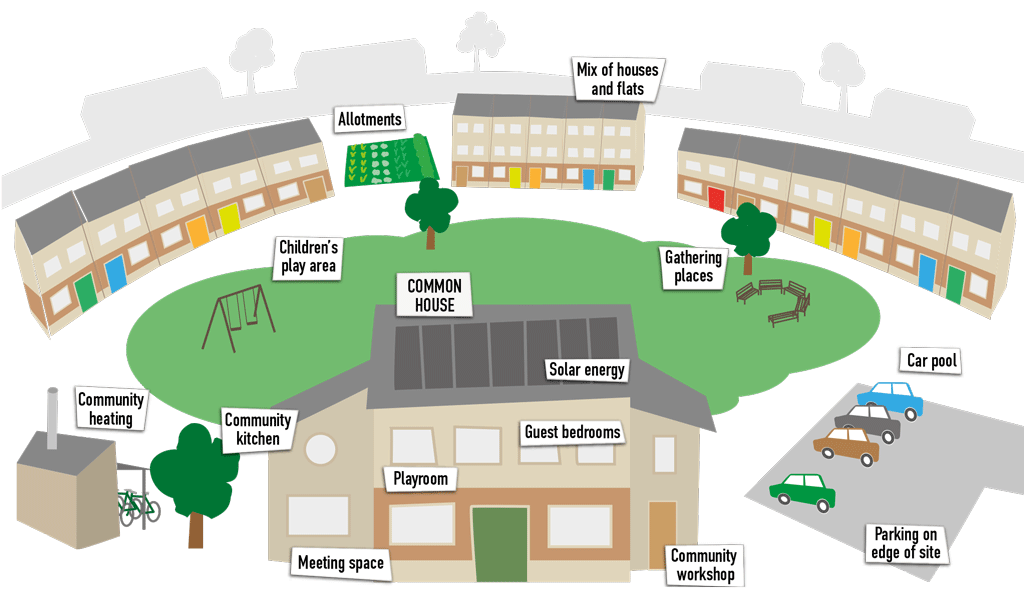Cohousing is collaborative living by choice. It is not an architectural style, but a lifestyle.
In a cohousing community, everyone has their own private home (which may be a house, a unit or a shared house), as well as shared community space(s).
Shared spaces could include communal dining/kitchen areas, gardens, laundries, workshops, yoga spaces and / or children’s play areas. There is no set amount of private or shared space. Instead, the design is something often decided on by the residents themselves before moving in.

Cohousing has many benefits over living in isolated homes and apartments, such as:
- Reduced costs of living by buying in bulk and sharing
- Reduced environmental footprint by sharing resources
- Opportunities for car or bike share
- No need to be lonely – live among a community of like-minded neighbours
Cohousing is based on the way humans lived for millennia in small villages. As a modern concept, it began in Denmark in the 1960 – 70’s. There are now many cohousing communities throughout Europe, the US, and Asia. Find out more here and here
In Australia, most cohousing or collaborative living communities have so far been set up in rural areas. However, there is growing interest in urban cohousing, and established communities now exist in parts of Melbourne. For more information see Cohousing Australia.
